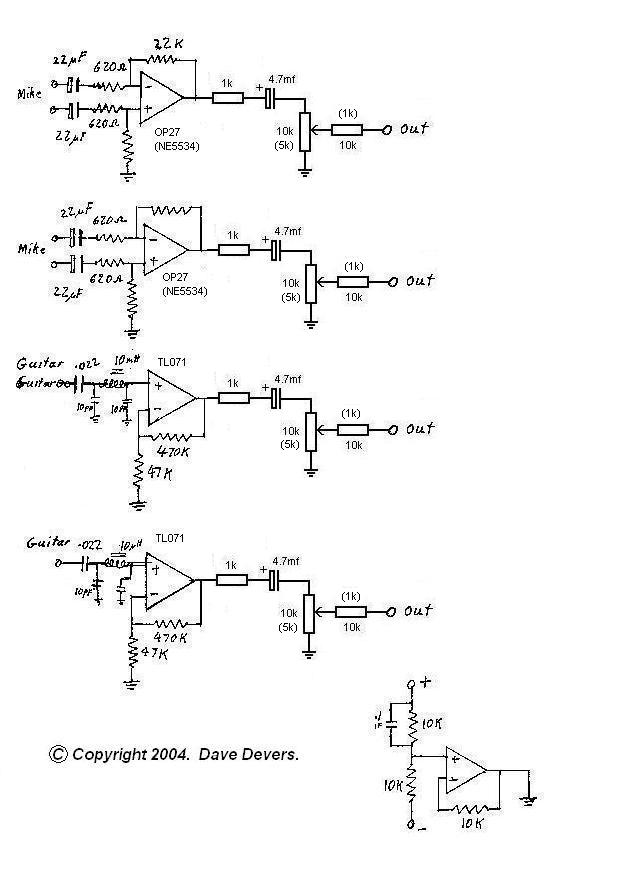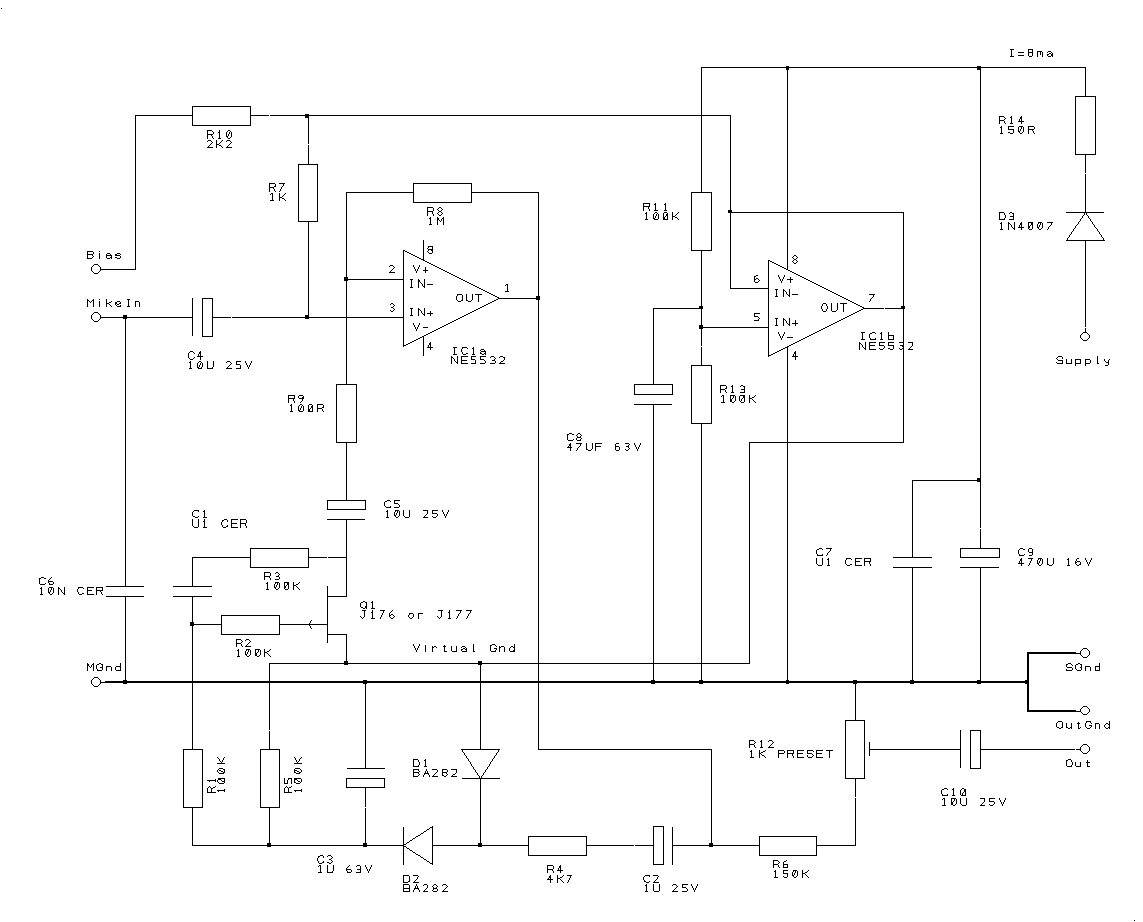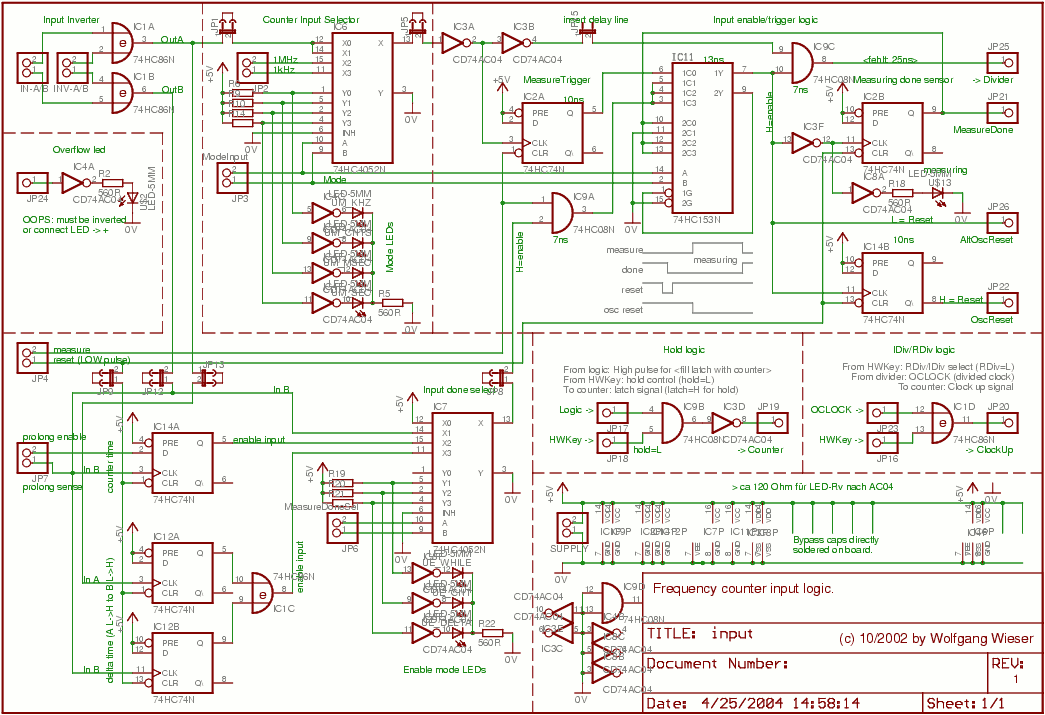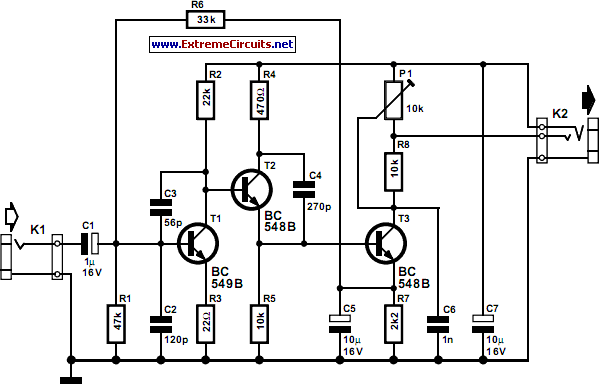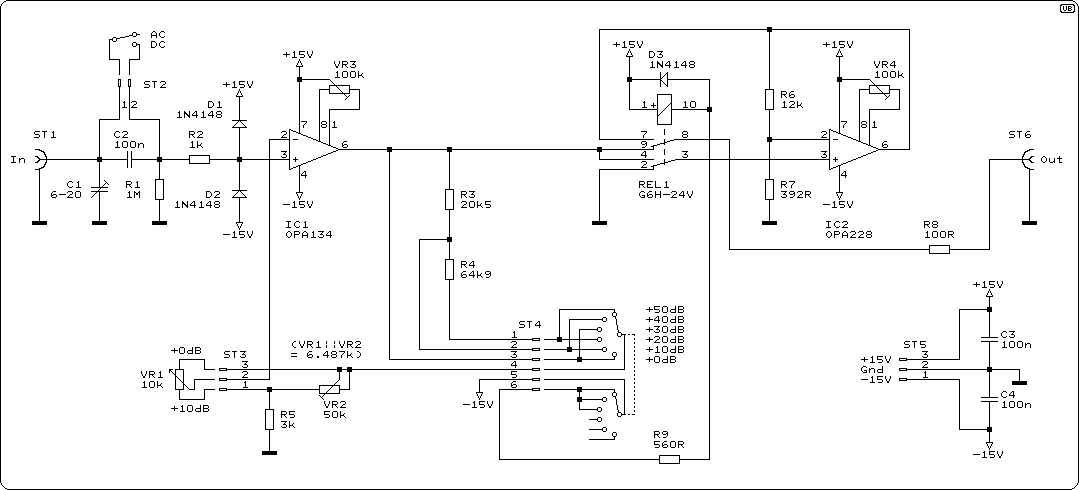
3 input microphone preamplifier
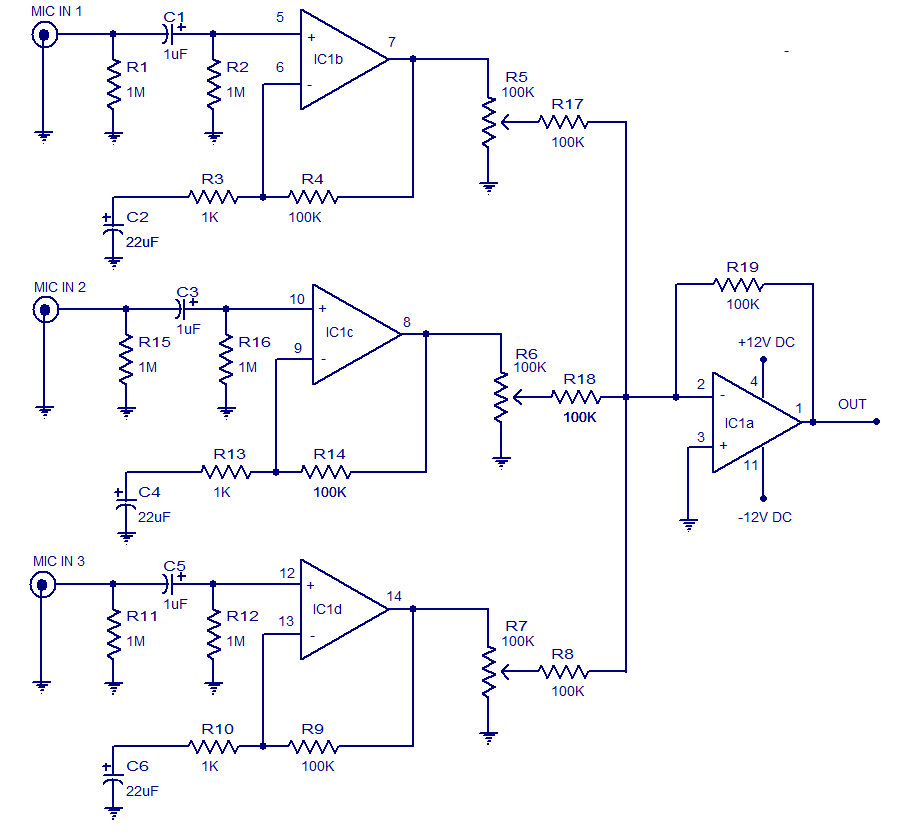
The circuit presented is a three-input microphone mixer and preamplifier utilizing the LM348 integrated circuit. The LM348 is a high-gain, internally compensated quad operational amplifier featuring a class AB output stage. It has a very low input supply current drain of 0.6 mA per operational amplifier and operates with a dual power supply. Within the LM348, three of the op-amps—IC1a, IC1b, and IC1c—are configured as non-inverting amplifiers, serving as input amplifiers for the respective microphone channels. The outputs from these amplifiers are combined and connected to the inverting input of IC1a, which is configured as an inverting amplifier. IC1a functions to mix the signals from each channel and also serves as the output stage.
The three-input microphone mixer and preamplifier circuit employs the LM348 operational amplifier to effectively amplify and mix audio signals from multiple microphones. The circuit design capitalizes on the characteristics of the LM348, which allows for efficient amplification with minimal power consumption.
The three non-inverting amplifiers (IC1a, IC1b, IC1c) are configured to receive audio signals from each microphone. Each microphone input is connected to its respective op-amp, ensuring that the audio signals are amplified without phase inversion. The gain of these amplifiers can be adjusted by varying the feedback resistors, allowing for flexibility in the overall output level of each microphone channel.
The outputs from the three non-inverting amplifiers are then combined into a single output signal through the inverting amplifier configuration of IC1a. This configuration not only mixes the audio signals but also provides additional gain control. The inverting amplifier setup allows for a summation of the input signals while inverting the phase of the output signal, which can be beneficial in certain audio applications.
The dual power supply requirement of the LM348 allows for symmetric operation, enabling the circuit to handle both positive and negative signal swings effectively. This is particularly important in audio applications where the signal can vary widely in amplitude and polarity.
Overall, this circuit design is suitable for applications requiring the mixing of multiple microphone signals into a single output, such as in live sound reinforcement or recording environments. The use of the LM348 ensures high-quality audio performance with low power consumption, making it an ideal choice for portable or battery-operated devices.The circuit given here is of a three input mic mixer cum preamplifier using the IC LM348. The LM348 is a high gain, internally compensated quad operational amplifier with a class AB output stage. The IC has very low input supply current drain (0. 6mA/ opamp) and operates from a dual power supply. Out of the four op-amps inside the IC LM348, IC1a, I C1b and IC1c are wired as non inverting amplifiers and they serve as the input amplifiers for the corresponding mic channels. The output of these three amplifiers are tied together and connected to the inverting input of the IC1a which is wired as an inverting amplifier.
IC1a mixes the signals from each channel and also works as the output stage. 🔗 External reference
The three-input microphone mixer and preamplifier circuit employs the LM348 operational amplifier to effectively amplify and mix audio signals from multiple microphones. The circuit design capitalizes on the characteristics of the LM348, which allows for efficient amplification with minimal power consumption.
The three non-inverting amplifiers (IC1a, IC1b, IC1c) are configured to receive audio signals from each microphone. Each microphone input is connected to its respective op-amp, ensuring that the audio signals are amplified without phase inversion. The gain of these amplifiers can be adjusted by varying the feedback resistors, allowing for flexibility in the overall output level of each microphone channel.
The outputs from the three non-inverting amplifiers are then combined into a single output signal through the inverting amplifier configuration of IC1a. This configuration not only mixes the audio signals but also provides additional gain control. The inverting amplifier setup allows for a summation of the input signals while inverting the phase of the output signal, which can be beneficial in certain audio applications.
The dual power supply requirement of the LM348 allows for symmetric operation, enabling the circuit to handle both positive and negative signal swings effectively. This is particularly important in audio applications where the signal can vary widely in amplitude and polarity.
Overall, this circuit design is suitable for applications requiring the mixing of multiple microphone signals into a single output, such as in live sound reinforcement or recording environments. The use of the LM348 ensures high-quality audio performance with low power consumption, making it an ideal choice for portable or battery-operated devices.The circuit given here is of a three input mic mixer cum preamplifier using the IC LM348. The LM348 is a high gain, internally compensated quad operational amplifier with a class AB output stage. The IC has very low input supply current drain (0. 6mA/ opamp) and operates from a dual power supply. Out of the four op-amps inside the IC LM348, IC1a, I C1b and IC1c are wired as non inverting amplifiers and they serve as the input amplifiers for the corresponding mic channels. The output of these three amplifiers are tied together and connected to the inverting input of the IC1a which is wired as an inverting amplifier.
IC1a mixes the signals from each channel and also works as the output stage. 🔗 External reference
